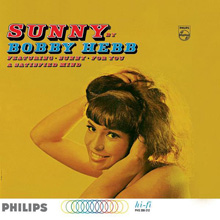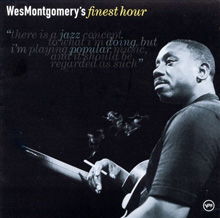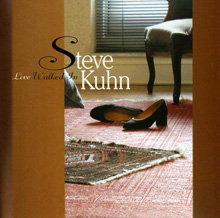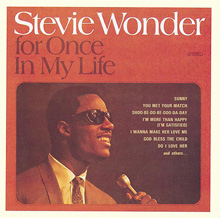Sunny
At the turn of the millenium, the performance-rights organization BMI put out a list of the Top 100 Songs of the Century, as measured by airplay. (We pause briefly for an incedental and utterly digressive pop quiz: what song was at the top of that list, with over 8 million performances? You'll find the answer at the bottom of this page and my money is on you being wrong no matter how many guesses you make. We now return to relevent remarks.) Sunny was at #25 on that list, sandwiched between Oh Pretty Woman and Proud Mary, solidly situated among an elite group of songs that could boast over 5 million performances.
 |
The back story of the song is more shadow than sun, I'm afraid. It was penned in 1963 by Bobby Hebb in the emotional wake of two tragic events that occured within days of each other; one shared by many, the other very personal. The public tragedy was the assasination in Dallas of President John F. Kennedy. The more personal loss was the fatal knifing of his brother Hal in a bar fight. The brothers were the children of blind musicians and had performed together since the younger Bobby was 3 years old. Hebb told an interviewer for Nashville Scene many year later that, for him, Sunny was not a person, but an attitude.
“Sunny” is your disposition. You either have a sunny disposition or you have a lousy disposition. Either you’re screaming at someone and angry, or you say, ‘No, uh-uh, I’m not angry. Let’s discuss this thing in a nice and pleasant way.’ Well, that pleasant way is a sunny disposition. Instead of confusing, and building chaos, let’s make this day a nice day for everyone. Spread that type of news so that you can become a little more relaxed and not filled with chaos, because chaos can become a killer.
Despite countless covers by vocalists the likes of Frank Sinatra, Ella Fitzgerald, Cher, James Brown and Stevie Wonder, Hebb's own performance remains definitive. That hit recording was released in 1966. You know it, but this will refresh your memory...
Audio Clip: Bobby Hebb sings his signature song, Sunny
 |
At the end of that clip you can hear the key modulating up a half step. The song has no bridge and no chorus, so this familiar device (think Barry Manilow's big finishes) serves to add musical and emotional interest from verse to verse. Wes Montgomery used it throughout his own mid-60's instrumental take on the tune. During this period of his career he was focused on material with which he could reach a wider audience, so there are many a jazz buff who would recommend you use his "Finest Hour" CD as a coaster and hie thee to the nearest Turn It Up! to see if you can score any of his Verve recordings in the bargain bins. Me, I'll take both. You...well, try playing what he's doing here in octaves before you write it off as lightweight.
Audio Clip: Wes Montgomery on Sunny
 |
It should be said that not all jazz musicians—and lots have covered the tune—use Sunny as a vehicle to get out of their too-hip ghetto. Most swing hard on it and enjoy the endless opportunties for reharmonization of the changes. Pianist Steve Kuhn does both, all while taking it at a walking pace. By this, the fourth chorus, he's already built up plenty of emotional intensity ( you'll have to buy the recording to hear his spacious openers). Still, he can't resist adding the half-step modulation to bump things up one last notch for the big finish.
Audio Clip: Steve Kuhn Trio on Sunny
A sub-genre of the instrumental category is "solo guitar renditions". Let's sample two very different of those, shall we? The first keeps us squarely in the jazz camp, where the ever-remarkable George Van Epps is playing the 7-string archtop he pioneered. In the second solo demo below, Nashville-based Pete Huttlingerpicks it fingerstyle with one less string than Van Epps and no arch in his top, but he still lays down a pretty hep groove.
One of the things that varies among arrangements of this song is what happens in the interval between choruses. In the original, there's that ascending chromatic line on the tonic minor chord (5-b6-6-b7) that sets up each modulation, reminding listeners of a certain age of the theme to Secret Agent Man. Both Van Epps and Huttlinger come up with catchy vamps for that section. You should too when you're ready to record this one.
Audio Clip: George Van Epps plays Sunny
Audio Clip: Pete Huttlinger does too, from his The Santa Rita Connection
 |
But as fun and flexible as this now-classic song is for instrumentalists, the lyric is a full partner in expressing Hebb's response-of-choice to sore challenge. So let's go out with another vocal rendition. Few artists can put across sheer joie-de-vivre as contagiously as Stevie Wonder, so he gets the honors. His arrangement lends the progression a bluesy touch by using a dominant 7 chord in bars 3 and 7, where we're using Fmaj7. Then in bar 9 ("The dark days are gone...") he uses a descending chromatic bass line—in our key, A-Ab-G-Gb—to connect (again, in our key) the Am and F chords. That Fmaj7 chord becomes Fmin where we play Bbmaj7. For a little theory workout, compare those two chords. If you keep all the notes of an Fmin triad and put a Bb under them as the root, what kind of Bb chord do you get?
I'll include enough of Wonder's performance to allow you to catch the by-now-familiar modulation up a half step. Even Little Stevie can't resist it! For your part, I suggest you not resist the temptation to get up and dance with this one, and sing along.
Audio Clip: Stevie Wonder, Sunny
[And the most performed song of the century, according to BMI: You've Lost That Lovin' Feelin', written by Barry Mann, Phil Spector and Cynthia Weil. Must be in deep, deep grocery store rotation.]
All Community Guitar Resources text & material © 2006 Andrew Lawrence
